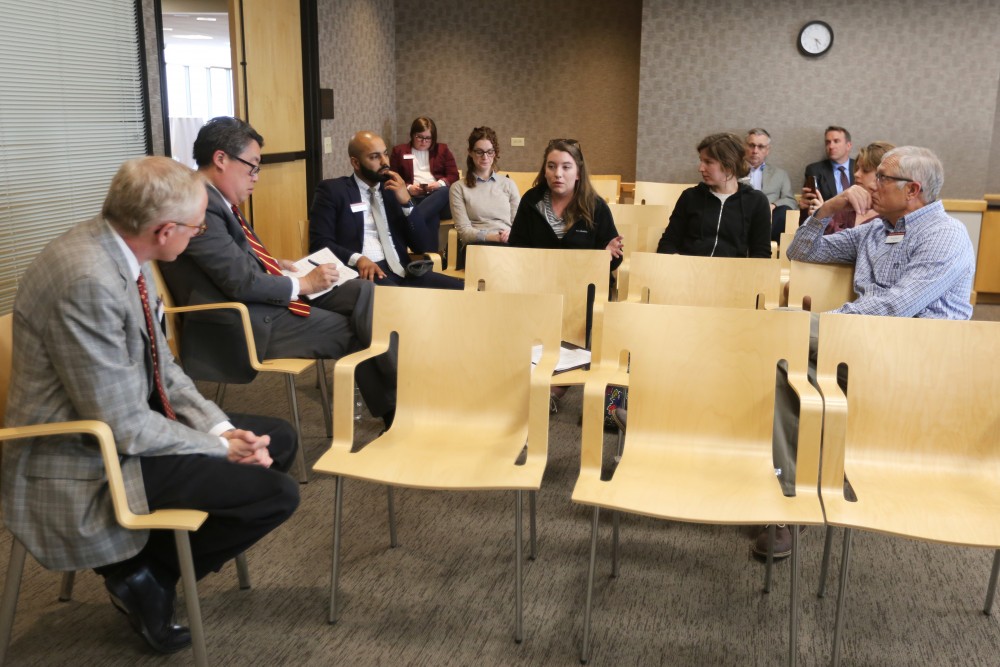While a student at the University of Minnesota, Grace Peterson had to work three to four jobs to support herself. Even with these jobs, Peterson lived paycheck to paycheck and graduated in May without any savings.
Her financial struggles inspired Peterson to campaign for a $15 per hour minimum wage at the University.
“I’m leaving the U, but I’m staying involved with the campaign because I don’t want other students to go through what I’ve gone through,” Peterson said.
Peterson is working with 15 for Student Workers, a group that aims to raise the University’s minimum wage to reflect the $15 minimum wage ordinance passed in the city of Minneapolis in 2017.

The ordinance will be fully implemented by 2024.
The University is bound by state law and therefore does follow city regulations.
According to public University data, the average student worker across all University of Minnesota campuses makes $10.67 per hour. Under current state law, minimum wage at the University is $9.65.
Over the past months, 15 for Student Workers has been meeting with University officials and holding public demonstrations to gain support for their movement.
One of their campaign strategies has been to engage in discussion with the Board of Regents.
In May, group members marched into a Board of Regents meeting to deliver letters to the regents. They also engaged with regents in a public listening session later in the month to discuss the topic.
“I would say that…because the city of Minneapolis has decided to go to a $15 minimum wage, the market conditions will force the University to follow because students have a choice about whether they want to make $15 at Jimmy John’s or McDonald’s as opposed to working their current student job,” said Regent Michael Hsu, who was at the public listening session.
Since the campaign to change the minimum wage began, campaigners have called into question the University’s policy regarding student workers.
According to the policy, student jobs are a form of financial aid, said Matt Kramer, vice president of University Relations.
The University focuses on employing as many students as possible as a way of providing financial aid and work experience, Kramer said.
Raising the University minimum wage would mean reducing the number of hours or workers available, which would contradict the University’s financial aid policy, Kramer said.
According to Kramer, there are no current plans to raise the student minimum wage.
“We’re told that there’s no money, that maybe [the University] would like to pay us more but there’s no money…it seems more like an issue of priorities,” said Kristiana Wright, a member of workers’ rights group UMN Grads United.
Wright, a Ph.D. student in rhetorical studies, focuses her research on the labor movement and push for $15 an hour minimum wage.
Wright founded an internship program that educates students in labor rights activism and works with Fifteen for Student Workers.
“The fact is, is that a lot of student workers are really struggling,” Wright said. “I’m definitely seeing momentum building [with the campaign], especially as the word spreads amongst student workers.”
People that successfully campaigned for a $15 minimum wage in the city of Minneapolis have supported the student worker campaign.
“We stand in solidarity with students organizing at the University because students, like all workers, deserve a living wage,” said Celeste Robinson, co-director of 15 Now Minnesota.
Katherine Steiner, a student worker on the Twin Cities campus, said she likes her job because it allows for flexible hours, shorter shifts and is close to her on-campus home.
“It is frustrating getting paid less,” Steiner said. “I’ve thought about getting a job somewhere else, just to get paid more, but right now…the versatility outweighs that.”








